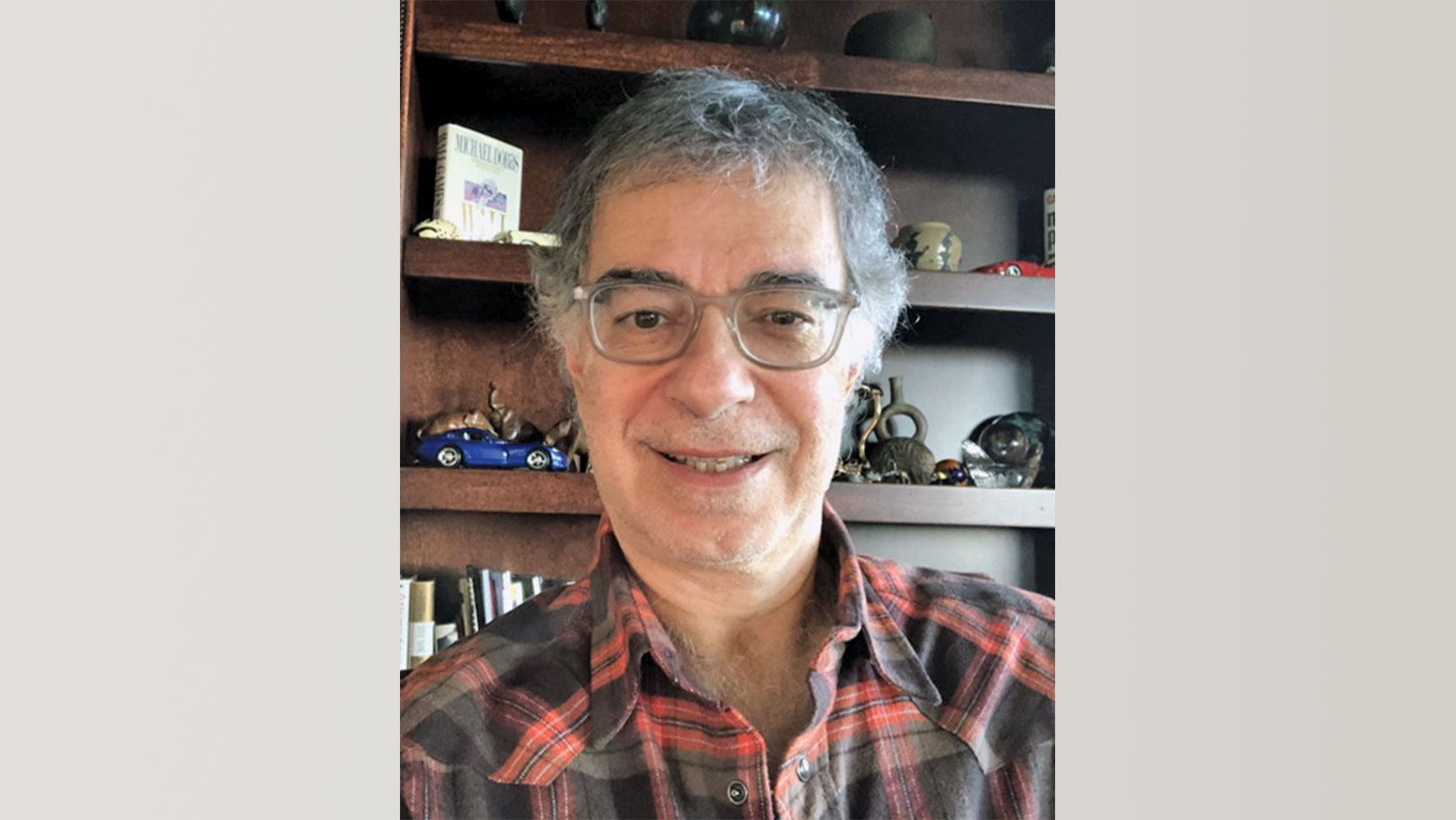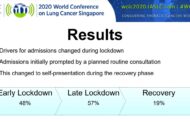To address the issue of low-dose CT screening, during the COVID-19 pandemic, for lung cancer and management of both screen-detected nodules and incidentally detected nodules, various eminent organizations and expert groups have created guidance documents.1-4 The overarching principal guiding safe resumption of nonurgent imaging is clearly stated in a separate document by the American College of Radiology (ACR)5: “If the risk of illness or death to a healthcare worker or patient from healthcare-acquired COVID-19 is greater than the risk of illness or death from delaying radiology care, the care should be delayed; however, if the opposite is true, the radiology care should proceed in a timely fashion.” The ACR details a four-tiered plan to describe the necessity associated with a particular type of imaging, with Tier 1 being urgent and emergent care and Tier 4 being imaging research; lung cancer screening falls into the Tier 3 category, elective care and screening. The ACR document also describes various safety measures that should be enacted for safe re-engagement of nonurgent care.
Guidance is also given for prioritizing screening participants or patients with incidental nodules. This varies somewhat among the different documents, but the general guidance is that patients already found to have nodules are considered to be higher risk. Their risk can be further stratified on the basis of size and doubling time or by the use of risk calculators, so that those with higher risk of having cancer should be given greater consideration for more immediate evaluation, whereas those at lower risk should be considered a lower priority, with delayed evaluation. For example, the European Society of Medical Oncology states the following2: “Lung cancer screening can be deferred until the COVID-19 pandemic resolves—It is reasonable for patients in the general population to defer screening low-dose CT, a deferral that is not likely to have an impact on overall survival.”
Getting Specific: 12 Scenarios
In the United States, a group of experts on screening and nodule management described 12 different scenarios and provided guidance for each one, on the basis of consensus opinion of the expert group. Results were published simultaneously in three journals: Chest; Radiology: Imaging Cancer; and the Journal of the American College of Radiology. The authors note the following3: “As much as possible, patient management should be based on evidence, and reflect a balance of benefits and harms of particular management approaches. Although many aspects of these scenarios have been reasonably defined in pre-COVID settings, the COVID pandemic introduces additional risks. The magnitude of these risks is not well defined, and is likely variable depending on the local situation.” They also explain that “[p]atient preferences should be taken into account in all of these scenarios, because individual patients are likely to differ in how they perceive the potential benefits and harms associated with delayed or modified evaluation and management.” They, too, recommend that “[d]uring the COVID-19 pandemic, consistent with CDC guidance to defer non-urgent care, it is suggested that the initiation of screening be delayed.”
Given this, the first-order consideration regarding delaying imaging should be relevant evidence-based information that helps us understand the potential risks of an individual getting scanned and also the risks for delaying or changing management in regard to a potential lung cancer. The ACR notes that “an accurate risk-benefit analysis of postponing versus performing a given non-urgent radiology examination or procedure often is not possible due to many unknown and complex factors.”1 The ACR also notes that risks associated with getting an imaging test in large part depend on specifics of the situation, including factors such as local pandemic statistics, availability of personal protective equipment, local safety practices, local regulatory guidance, patient factors, and radiology workforce considerations. Taking all this into account, it becomes clear that the risks associated with getting an imaging test cannot be readily quantified, although it is likely extremely low when guidelines such as those proposed by the ACR are followed. Nevertheless, understanding the risks of getting an imaging test remains an important consideration, albeit not readily quantifiable.
The next part of the assessment relates to the harms of delaying a particular examination, whether it be the initial screening or the follow-up of a nodule. Here, the concern is based primarily on the probability that a person has a malignancy and on the risk associated with delaying treatment. In regard to the first of these considerations, the person who has either not been screened or is returning for an annual screen without any prior finding has a lower risk of cancer than someone already found to have a nodule that needs further evaluation. However, when thinking in terms of the size of those overall populations, the general screening group will be much larger and, thus, as a group will have more cancers. In regard to the issue of delayed treatment for an early-stage lung cancer, a recent article based on an analysis of the U.S. National Cancer Database, and referenced in the ACR guidance document, suggested that for stage I lung cancer, each week of delay in initiating treatment was associated with an increased risk of death of 3.2%.6 Assuming this is correct, then a 6-month delay in work-up would lead to an increased probability of dying of 127%. An alternative way to estimate this increased probability of dying is demonstrated below using a more specific example provided by the expert consensus statement3:
Under the above scenario, say a person has a 10-mm solid nodule and had been scheduled for their immediate work up, and is now told to delay their scan and come back in an additional 6 months. Let’s assume the cancer had a doubling time of 60 days. Waiting an additional 6 months, the tumor would now be 20 mm in diameter. Using a rough estimate of curability, it might have been curable 80% of the time with immediate work up, but at 6 months, it may be curable 50% of the time. Thus, we would be able to tell the person that with his or her nodule having a 25% chance of malignancy, their chance of dying from it initially would have been 5%, and by waiting an additional 6 months the chance would now be almost 13%, more than double (150% more).
So now we must ask how the above consideration might impact a person’s willingness to wait that additional 6 months, when weighed against some unknown, although likely very small, estimate of being infected with COVID-19. Although there can be some disagreements about the extent of these estimates, the overall approach at least allows for some understanding about the meaning of a delayed diagnosis of lung cancer, and it even applies to the much larger group of people that are considering being screened for the first time, when their individual probability of having cancer is low.
Lung cancer screening, although now endorsed by major medical societies and reimbursed by Medicare and Medicaid, has still not seen successful uptake in the population, with some estimates as low as 6% of those eligible for screening. I have previously reported that part of this relates to a misrepresentation of the potential benefits of enrolling in a screening program and that the benefits are much greater than typically described in those commonly used shared-decision aids.7,8 Now, in the midst of the COVID-19 pandemic, the added risk of infection based on having the scan must be balanced against the additional risk of delaying the scan and delaying treatment. I suggest that, on the basis of the above considerations, these two risks are in general vastly different—so much so, that we must reconsider the idea of what is an essential radiology service, especially given the status of lung cancer as the leading cause of cancer death as well as the proven value of low-dose CT screening.
References:
- ACR guidelines for resumption of lung cancer screening: quick reference guide. American College of Radiology. Accessed August 24, 2020. https://www.acr.org/-/media/ACR/Files/Lung-Cancer-Screening-Resources/L…;
- ESMO management and treatment adapted recommendations in the COVID-19 era: lung cancer. European Society for Medical Oncology. Accessed August 24, 2020. https://www.esmo.org/guidelines/cancer-patient-management-during-the-co…;
- Mazzone PJ, Gould MK, Arenberg DA, et al. Management of lung nodules and lung cancer screening during the COVID-19 pandemic: CHEST expert panel report. J Am Coll Radiol. 2020;17(7):845-854.
- Interim infection prevention and control recommendations for healthcare personnel during the coronavirus disease 2019 (COVID-19) pandemic. Centers for Disease Control and Prevention. Accessed August 24, 2020. https://www.cdc.gov/coronavirus/2019-ncov/hcp/infection-control-recomme…;
- ACR statement on safe resumption of non-urgent radiology care during the COVID-19 pandemic. American College of Radiology. Accessed August 24, 2020. https://www.acr.org/Advocacy-and-Economics/ACR-Position-Statements/Resu…;
- Khorana AA, Tullio K, Elson P, et al. Time to initial cancer treatment in the United States and association with survival over time: an observational study. PLoS One. 2019;14(3):e0213209. Published correction appears in PLoS One. 2019;14(4):e0215108.
- Yankelevitz DF, Smith JP. Understanding the core result of the National Lung Screening Trial. N Engl J Med. 2013;368(15):1460-1461. Published correction appears in N Engl J Med. 2013;368(18):1757.
- Yankelevitz DF. CT screening for lung cancer: successful trial, but failed understanding. J Thorac Oncol. 2018;13(1):12-15.






